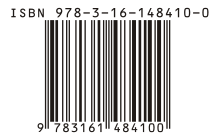
Computer data storage is a technology consisting of computer components and recording media that are used to retain digital data. It is a core function and fundamental component of computers.

Disk storage is a general category of storage mechanisms where data is recorded by various electronic, magnetic, optical, or mechanical changes to a surface layer of one or more rotating disks. A disk drive is a device implementing such a storage mechanism. Notable types are the hard disk drive (HDD) containing a non-removable disk, the floppy disk drive (FDD) and its removable floppy disk, and various optical disc drives (ODD) and associated optical disc media.

Data storage is the recording (storing) of information (data) in a storage medium. Handwriting, phonographic recording, magnetic tape, and optical discs are all examples of storage media. Biological molecules such as RNA and DNA are considered by some as data storage. Recording may be accomplished with virtually any form of energy. Electronic data storage requires electrical power to store and retrieve data.

Punched tape or perforated paper tape is a form of data storage that consists of a long strip of paper in which holes are punched. It developed from and was subsequently used alongside punched cards, differing in that the tape is continuous.

Mastering, a form of audio post production, is the process of preparing and transferring recorded audio from a source containing the final mix to a data storage device, the source from which all copies will be produced. In recent years digital masters have become usual, although analog masters—such as audio tapes—are still being used by the manufacturing industry, particularly by a few engineers who specialize in analog mastering.
Expandable storage is a form of computer storage that is designed to be inserted and removed from a system. Some forms of removable media, such as optical discs, require a reader to be installed in the computer, while others, such as USB flash drives, have all the hardware required to read them built into the device, so only need a driver to be installed in order to communicate with the device.
Data degradation is the gradual corruption of computer data due to an accumulation of non-critical failures in a data storage device. The phenomenon is also known as data decay, data rot or bit rot.
In computing, mass storage refers to the storage of large amounts of data in a persisting and machine-readable fashion. In general, the term is used as large in relation to contemporaneous hard disk drives, but it has been used large in relation to primary memory as for example with floppy disks on personal computers.
Non-volatile memory (NVM) or non-volatile storage is a type of computer memory that can retain stored information even after power is removed. In contrast, volatile memory needs constant power in order to retain data.

Magnetic storage or magnetic recording is the storage of data on a magnetized medium. Magnetic storage uses different patterns of magnetisation in a magnetizable material to store data and is a form of non-volatile memory. The information is accessed using one or more read/write heads.
Reading is an action performed by computers, to acquire data from a source and place it into their volatile memory for processing. Computers may read information from a variety of sources, such as magnetic storage, the Internet, or audio and video input ports. Reading is one of the core functions of a Turing machine.
Digital permanence addresses the history and development of digital storage techniques, specifically quantifying the expected lifetime of data stored on various digital media and the factors which influence the permanence of digital data. It is often a mix of ensuring the data itself can be retained on a particular form of media and that the technology remains viable. Where possible, as well as describing expected lifetimes, factors affecting data retention will be detailed including potential technology issues.
Write once read many (WORM) describes a data storage device in which information, once written, cannot be modified. This write protection affords the assurance that the data cannot be tampered with once it is written to the device.
Preservation of documents, pictures, recordings, digital content, etc., is a major aspect of archival science. It is also an important consideration for people who are creating time capsules, family history, historical documents, scrapbooks and family trees. Common storage media are not permanent, and there are few reliable methods of preserving documents and pictures for the future.

Sound recording and reproduction is the electrical, mechanical, electronic, or digital inscription and re-creation of sound waves, such as spoken voice, singing, instrumental music, or sound effects. The two main classes of sound recording technology are analog recording and digital recording.
In computing, external storage comprises devices that store information outside a computer. Such devices may be permanently attached to the computer, may be removable or may use removable media.
The history of sound recording - which has progressed in waves, driven by the invention and commercial introduction of new technologies — can be roughly divided into four main periods:
Paper data storage refers to the use of paper as a data storage device. This includes writing, illustrating, and the use of data that can be interpreted by a machine or is the result of the functioning of a machine. A defining feature of paper data storage is the ability of humans to produce it with only simple tools and interpret it visually.
A ballot marking device (BMD) or vote recorder is a type of voting machine used by voters to record votes on physical ballots. In general, ballot marking devices neither store nor tabulate ballots, but only allow the voter to record votes on ballots that are then stored and tabulated elsewhere.
A track is a path on a recording medium. There are some variations in nomenclature; for some media a track is a logical path and for others it is based on the geometry of the medium. The term is not used for punched cards.







